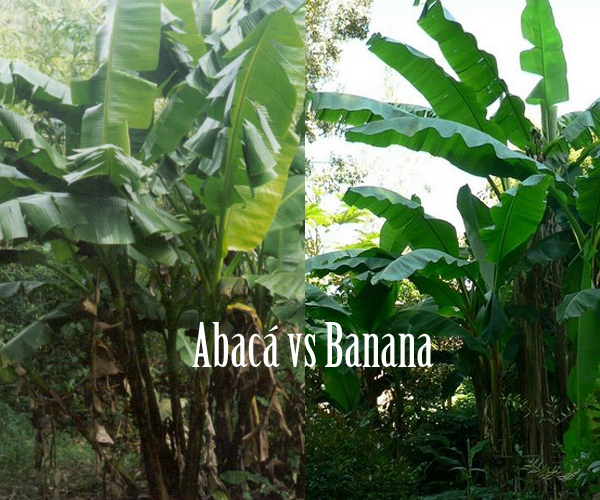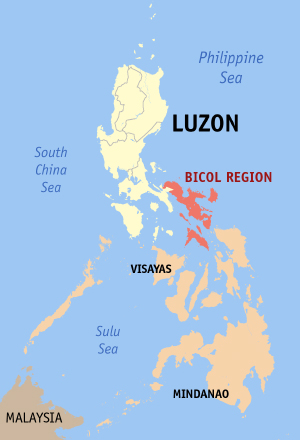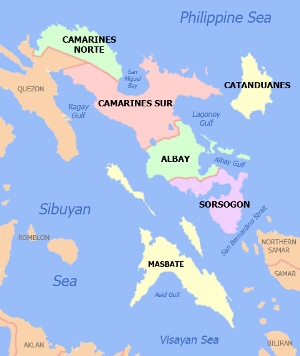Blog Archives
Making Abaca Fiber
Following last month’s post on What is Abaca?, we’re going to have a look at the process behind making abaca fiber.
Abaca fiber is extracted from the leaf sheath around the base of the abaca plant. Harvesting of abaca stalks usually takes place between 18 and 24 months from the first shoots. When mature, an abaca plant will have about 12 to 30 leaf stalks, each approximately 12 to 20 feet high. Subsequent harvest is done at 3 to 4 month intervals.
There are two stages in the harvesting process: (1) topping, when the leaf stalks are cut at the base of the petiole with a knife or a sickle, and (2) tumbling, when the stalks are tumbled down with the use of a bolo knife.
After tumbling, the cut stalks are put in a pile, ready for the next step: tuxying.
Tuxying is the process of extracting the fiber from the leaf sheaths. A specially-made tuxying knife is used to make an incision through the inner and middle layer of each sheath, close to the base or butt end to remove the outer layer.
The strips, or “tuxies”, obtained from this process are then put through a cleaning process, called stripping, in which all pulpy material is scraped off and the strands of fiber are freed. In the Philippines, the two common stripping methods in use are hand-stripping and spindle stripping.
Hand-stripping (hagotan) is a simple yet laborious method. The strip, or tuxy, is inserted between a block and the stripping knife, then pulled with force from the tip end of the tuxy to separate the fiber from any waste.
The spindle stripping method involves winding the fibers around a tapered-shaped spindle which is kept in motion by an electric motor or an engine. A spindle stripped fiber tends to be whiter and more lustrous than a corresponding grade of hand stripped fiber.
Fibers recovered vary from 1.5% to 2% by weight of the freshly cut stalks. The abaca fibers are then left out to dry naturally in the sun.
Once the abaca fibers have dried out sufficiently, they are transported to a warehouse where they are sorted according to quality.
The best grades of abaca are fine, lustrous, light beige in colour and very strong. The official standard grades of abaca fiber are divided into three classes depending on the manner of extraction: hand-stripping, spindle-stripping or decortication. Quality is then determined by colour, texture, fiber length, strength, and cleaning, which is a direct result of the stripping method and knife used.
Further Reading & Resources;
(1) Official Grades of Abaca. Republic of the Philippines Department of Agriculture Fiber Industry Development Authority. http://fida.da.gov.ph/Templates/abaca_grades_and_uses.htm
(2) The Story of Abaca. The Common Thread. http://www.the-common-thread.com/—-The-Story-of-Abaca.html
(3) Fiber Market Report: Baling, Local Purchase, Exports. Republic of the Philippines Department of Agriculture Fiber Industry Development Authority. http://fida.da.gov.ph/Templates/market_report_abaca.htm
Next post will go into more detail on the various uses of abaca fiber.
What is Abacá?
I’ve been researching the eco-friendly abaca fiber, so stay tuned more posts as I scour the Internet for information. This is for an exciting project for Kailique Online Boutique that I hopefully will be able to announce in the next couple of months!
What is Abacá?
Abacá is a species of banana plant native to the Philippines and is part of the same genus, Musa, as the more common banana plant that it closely resembles. Its local nickname is “BacBac”, while its more scientific botanical name is Musa Textilis.
While banana plants are often referred to as trees, technically they are herbaceous flowering plants and their apparent stems are actually the bases of the huge leaf stalks.
How can you tell the Abacá plant apart from the common Banana plant?
Here are the traits that differentiate an Abacá tree from its lookalike cousin:
(1) Fruit: The most obvious difference between the two is the type of fruit they produce. The abacá fruit is smaller, inedible and full of seeds.
(2) Leaf Shape: Abacá leaves are smaller and narrower, with pointed ends, while banana leaves are broader with more rounded ends.
(3) Leaf Colour: Abacá leaves are a darker shade of green than banana leaves.
(4) Stalks: Abacá stalks are more slender. When mature, the abacá plant consists of about 12 to 30 stalks radiating from a central root system, each of which grow to about 12 to 20 feet high.
(5) Height: The average height of an abacá plant is 15 to 20 feet tall, usually smaller than the banana plant which can grow to 25 feet tall.
Origins of Abacá.
The abacá is believed to have evolved in the Bicol region of the Philippines, a region composed of four provinces in the Bicol Peninsula, the southeastern end of Luzon island, and two island-provinces adjacent to the peninsula, Catanduanes and Masbate.
The Bicol region is still the largest producer of abacá with its production accounting for 37.5% of total output in the Philippines for January to November 2011. The second largest producer was Eastern Visayas, accounting for 22.7% of the country’s total output, and the third was the Davao region.
While the Philippines supplies 85% of the total abacá requirement of the world, abacá has grown as a commercial crop in other parts of the world, including Ecuador and Costa Rica. The fiber of abacá was also once generally referred to as Manila hemp, and the Philippines is the world’s largest provider of the abacá plant to other countries for the processing of fibers into twine and speciality paper.
The major markets for abacá are the United States, Japan and Germany.
More to come about the Uses of Abacá Fibre.
References:
(1) About Abaca – Abaca Plant. Abaca Philippines. http://abacaphilippines.com/abaca.php?go=about&show=plant
(2) Fortunato, Michelle. What is the Origin of Abaca? eHow. http://www.ehow.com/facts_6680029_origin-abaca_.html
(3) Musa (genus). Wikipedia. http://en.wikipedia.org/wiki/Musa_%28genus%29
(4) Abacá. Wikipedia. http://en.wikipedia.org/wiki/Abaca
(5) Abaca exports reached $122.01M in Jan. to Oct. 2011. Business Mirror. http://businessmirror.com.ph/component/content/article/53-agri-commodities/21666-abaca-exports-reached-12201m-in-jan-to-oct-2011




















